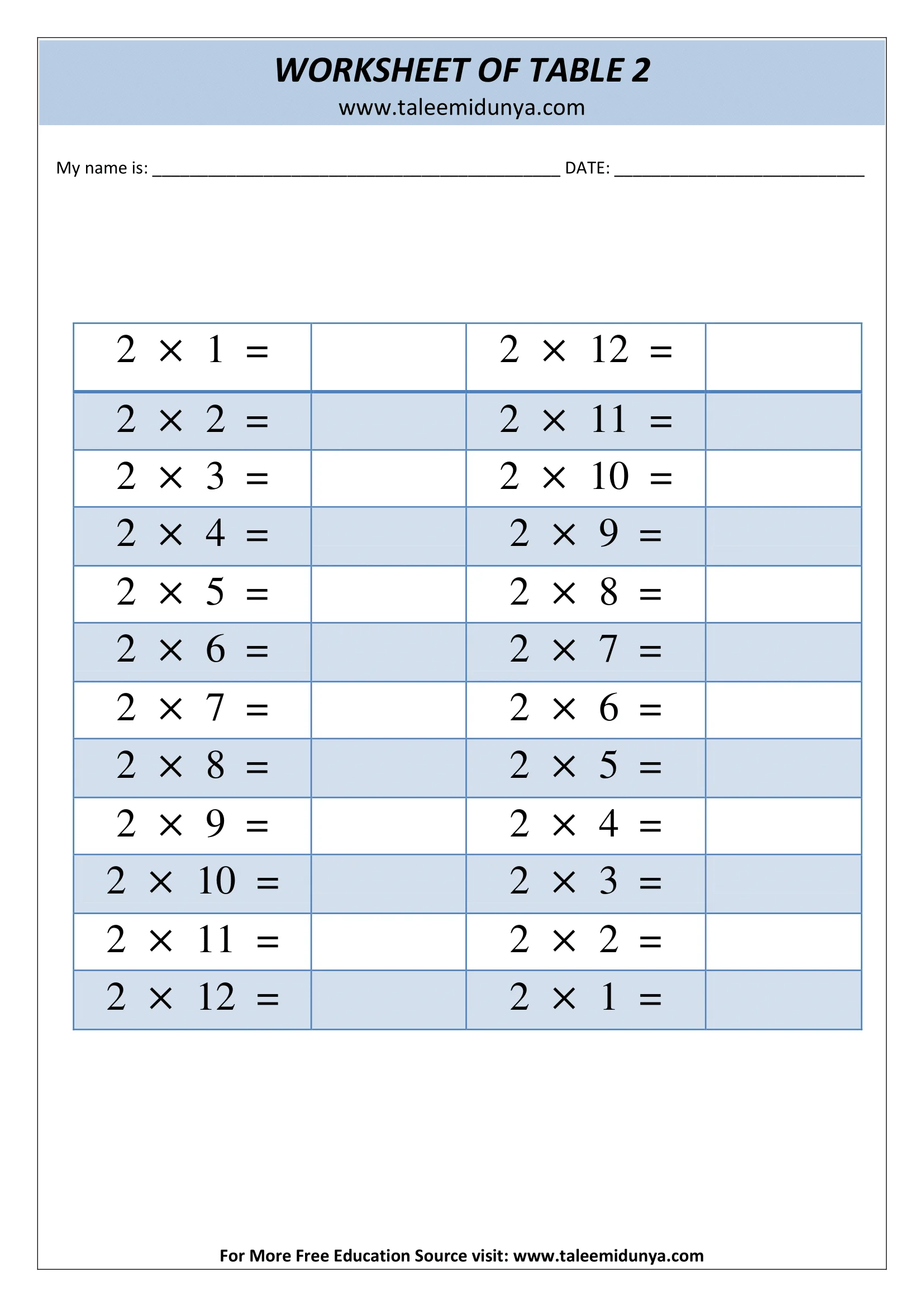table of 2
table of 2
Learning the Table of 2
Learning multiplication tables is a fundamental math skill for young children. The table of 2 is one of the first tables kids learn, and it helps them understand the concept of multiplication. Here’s a fun and engaging way to help kids learn the table of 2.
Step-by-Step Learning
Introduction to Multiplication: Start by explaining what multiplication is. Use simple terms like “Multiplication is adding the same number many times.” For example, 2 times 3 means adding 2 three times (2 + 2 + 2).
Understanding the Table of 2: Show the table of 2 and read it out loud together. For example:
1 x 2 = 2 (Two)
2 x 2 = 4 (Four)
3 x 2 = 6 (Six)
4 x 2 = 8 (Eight)
5 x 2 = 10 (Ten)
6 x 2 = 12 (Twelve)
7 x 2 = 14 (Fourteen)
8 x 2 = 16 (Sixteen)
9 x 2 = 18 (Eighteen)
10 x 2 = 20 (Twenty)
Visual Aids: Use visual aids like flashcards, charts, or number lines to help kids visualize the table of 2. Seeing the numbers can make it easier for them to remember.
Repetition and Practice: Repetition is key to learning multiplication tables. Practice the table of 2 regularly. You can do this by reciting the table together, writing it down, or using educational apps and games.
Engaging Activities
Counting Objects: Use everyday objects like toys, blocks, or fruits to practice the table of 2. For example, group the objects in pairs and count them together. This hands-on activity helps kids understand the concept of multiplication.
Songs and Rhymes: Sing songs or rhymes that include the table of 2. Music and rhythm can make learning more enjoyable and memorable1.
Games and Puzzles: Play games that involve the table of 2, such as “Multiplication Bingo” or “Memory Match.” These games can make learning fun and interactive2.
Storytime: Create stories that incorporate the table of 2. For example, a story about two friends who collect items in pairs can help kids visualize and remember the multiplication facts.
Practice and Reinforcement
Daily Practice: Incorporate the table of 2 into daily routines. For example, count pairs of items during cleanup or while setting the table. Regular practice helps reinforce learning.
Positive Reinforcement: Praise and encourage the child as they learn the table of 2. Positive reinforcement boosts their confidence and motivation to learn.
Interactive Apps and Videos: Use educational apps and videos that focus on the table of 2. These digital tools can provide interactive and engaging ways to practice multiplication34.
Conclusion
Learning the table of 2 is an important milestone for young children. By using a variety of engaging activities and consistent practice, children can master the table of 2 and develop a strong foundation for future math skills. Remember to make learning fun and interactive, and celebrate their progress along the way!
